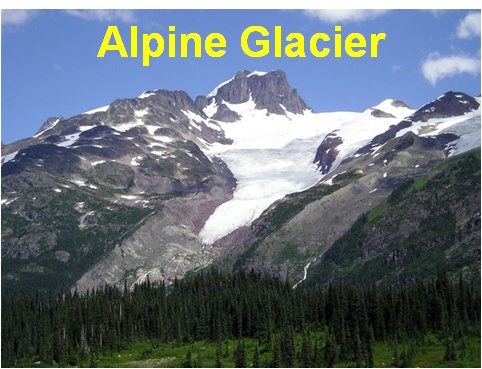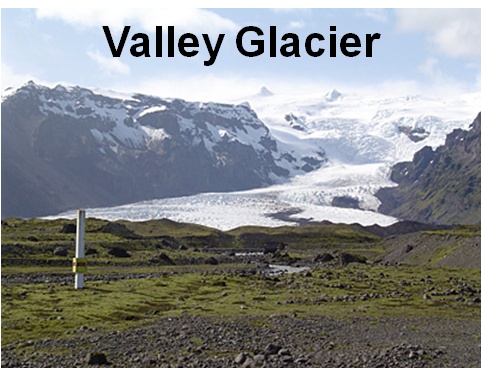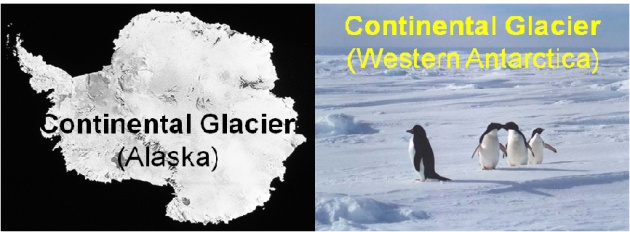- By the definition;Glacial Age, It is defined as the Ice Age which started about 40 Ma and intensified 2.6 to 3 Ma,we are still in Ice age that began 2.6 to 3 Ma because Antarctic and Greenland Ice Sheets (a very thick, hard and permanent layer of ice covering a large area of land since the beginning of Pleistocene Epoch, especially those in Antarctica and Greenland) still exist since the said Epoch
- A Glacial Period is an interval of time (thousands of years) in Ice Age that is marked by colder temperatures and glacier growth. Inter-glacials on the other hand, are periods of warmer climate between glacial periods. The last glacial period ended about 15,000 years ago. Holocene Epoch (an Epoch that began just after Pleistocene Epoch, about 12,000 years ago and is continuing to present time. Holocene Epoch is a part of Quaternary Period) is the current inter-glacial
- Glacial ice is the largest source of fresh water on the earth, supporting one third of the world's population
- Many glaciers store water during one season and release it later as water melts; a big water source that is very important for the plants, animals and human uses when other sources are be inadequate
- Glaciers are categorized by their morphology, thermal characteristics and physical & mechanical behavior. Alpine Glacier also known as Mountain Glacier is a glacier that moves down from a high valley.


- An alpine glacier is sometimes called Valley Glacier. Larger glaciers which cover an entire mountain, mountain range or volcano are called Ice Caps. Ice caps have an area less than 50,000 km² by definition.
- Glacial bodies larger than 50,000 km² are called Ice Sheets or Continental Glaciers.

There are only two enormously large Ice Sheets or Continental Glaciers in the world: Antarctica and Greenland



